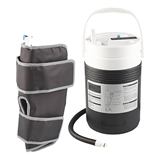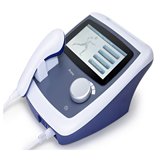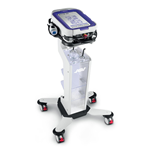While the number of patients receiving renal replacement therapy has increased worldwide, patient characteristics and dialysis practices vary widely between countries1.
To gain a better understanding of the association between haemodialysis-related variables and general population global health indicators, Calice-Silva and colleagues analysed data from the MONitoring Dialysis Outcomes (MONDO) database and correlated it with global health data from the World Health Organisation and the Human Development Index. The MONDO cohort included 84,796 prevalent haemodialysis (HD) patients from 27 countries/regions where data was collected from 2006 to 2011.
The MONDO initiative, established by Fresenius Medical Care’s Renal Research Institute (RRI), is designed to improve the understanding of the epidemiology of patients with end-stage renal disease (ESRD) globally. The initiative collects data on patient demographic parameters, treatment characteristics, laboratory results, and outcomes (such as mortality and hospitalisation). It includes data collected from Fresenius Medical Care dialysis providers and its partners, covering patients in more than 40 countries.
Global population health indicators from the 2014 World Health Organisation report and the Human Development Report Office 2014 included life expectancy, mortality, extent of employment, healthcare resource availability, and health expenditure in a given country or region.
The authors identified a number of socioeconomic indicators that were correlated with dialysis variables. Significant correlations were found between HD demographics (age and sex) and population education, wealth, mortality, and health indicators. They point out that these correlations are similar to those found in the general population, where age, gender and race are directly related to population socioeconomic status and availability of health resources. Cardiovascular assessment, fluid management, and dialysis adequacy were also strongly correlated with education, wealth, and health care resource indicators.
The authors also found that the percentage of HD patients with particular comorbidities varied widely between countries:
- In Australia, 30% of HD patients had diabetes mellitus (DM), 46% were diagnosed with ischaemic heart disease (IHD), and 21% peripheral arterial/venous disease (PAD/PVD).
- The mean for HD patients with these comorbidities across all countries studied was 28.2% for DM, 13.04% for IHD and 7.11% for PAD/PVD.
- By contrast, the United States was found to have 54% of HD patients with DM (the highest among all countries studied), 12% with IHD, and 10% with PAD/PVD.
The authors suggest that their hypothesis-generating study may stimulate further investigation into how global health indicators interfere with access to haemodialysis, treatment provision and patient outcomes.
References:
- Chugh KS, Jha A. Differences in the care of ESRD patients worldwide: required resources and future outlook. Kidney Int Suppl 1995;50:S7-S15.
- Calice-Silva V, Hussein R, Yousif D, et al. Associations between global population health indicators and dialysis variables in the monitoring dialysis outcomes (MONDO) consortium. Blood Purif 2015;39:125-136.

































